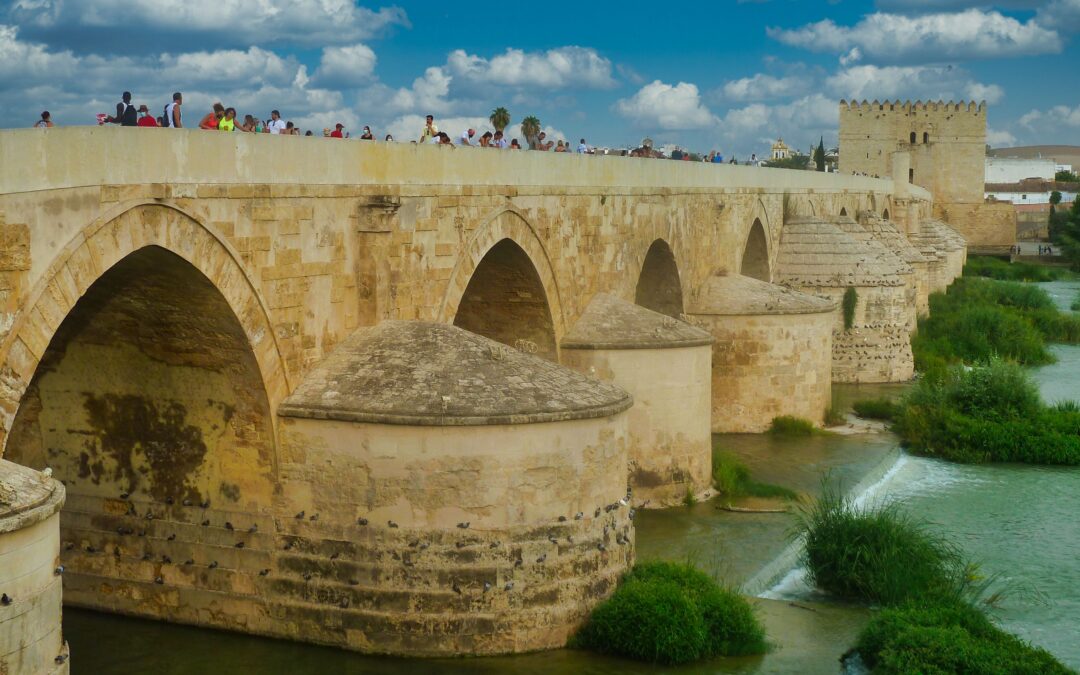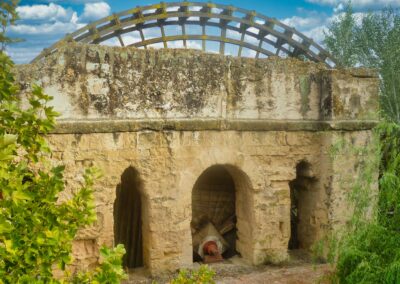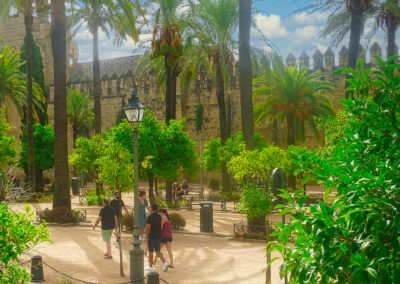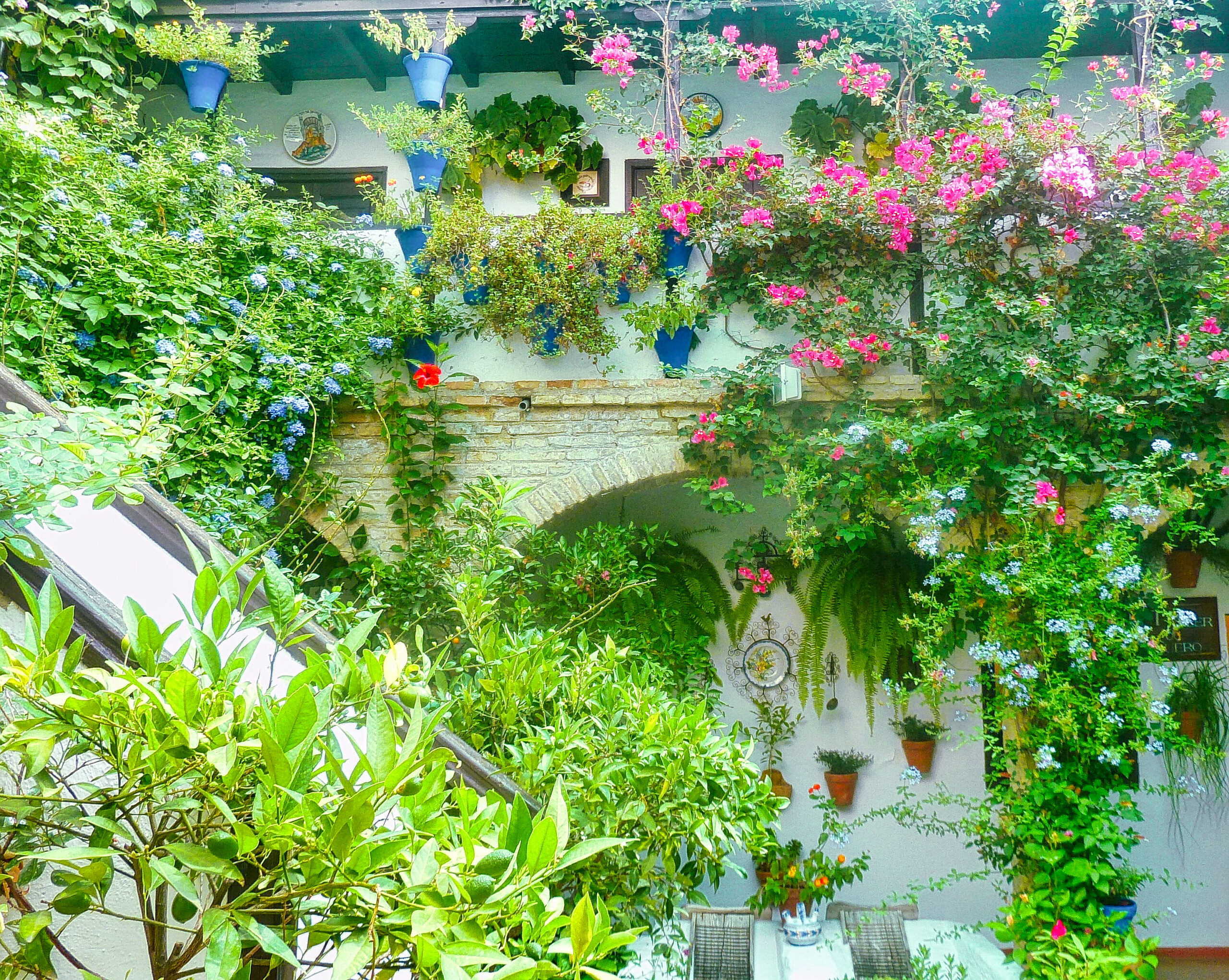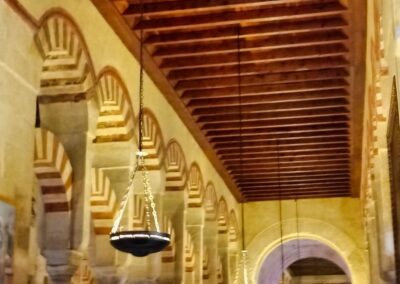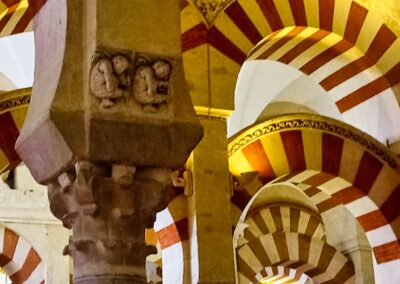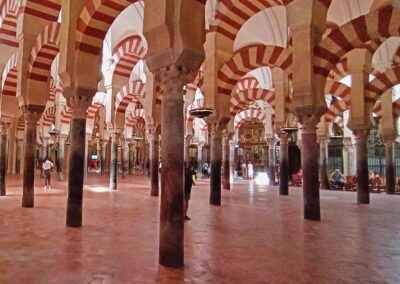Nothing really prepared us for the sweltering heat in Andalusia in August. An unexpected heatwave with temperatures exceeding 42 degrees was no joke! But, the city of Cordoba was so charming that the uncomfortable conditions faded into the background. Besides which, with a Pub, Ice Cream Shop or Ice Slushy machine around every corner, you need never become de-hydrated!
Wondering through the city streets at night is quite a surreal experience…
You can only really appreciate Cordoba if you have some understanding of the rich history of this city. It is impossible to summarise hundreds of years in a single post, but here goes…
The History of Cordoba
Cordoba was founded by the Romans circa 169 BC and it quickly grew to become a major centre in the southern part of the Iberian peninsula. You can still see the remains of a Roman temple, begun in the rein of Claudius and completed in the reign of Domitian, on Claudio Marcello street. Cordoba became a Christian Bishopric as early as the third century.
Cordoba’s rise to fame, however, started in 711 AD following the defeat of the Visigoths at the hands of the Moors. Following their conquest of the Southern part of the Iberian peninsula in the eighth century, the Moors of the Umayyad Caliphate renamed these lands al-Andalus in place of the old Roman name, Hispania. This is where the name of Spain’s most southern province, Andalusia, comes from.
The Moors would expand the mosque extensively over the next two centuries. Cordoba would eventually have a total of more than 1000 mosques!
Cordoba prospered and became the first city to boast paved streets and street lighting as well as a city-wide central water supply. Public bath houses or Hammams proliferated throughout the city eventually exceeding more than 600.
An influx of massive wealth and prosperity allowed the Caliph to build a truly magnificent palace at Medina Azahara in 936, just a few kilometres outside Cordoba. By now Cordoba had become a world-renowned centre for the study of religion (Judaism, Christianity and Islam), science, medicine, law, philosophy, music, poetry, etc., and famous scholars flocked to its gates.
However, civil warfare amongst Moorish leaders led to the collapse of the caliphate. In 1009 Medina Azahara was destroyed. By the 1020s, the caliphate’s central political control had dissolved and competing so-called Taifa Kingdoms broke away from the caliphate and vied for power amongst each other. This made it easier for the northern Christian powers to attack Cordoba.
Take a walk with us along the walls of the ancient castle.
On June 29th, 1236, Cordoba fell to King Ferdinand III and Muslim rule came to an end. Over the coming decades Mosques were gradually replaced by churches and monasteries.
Perhaps the most definitive mark of the Christian reconquest of Cordoba can be found in the Christian cathedral that was built in the middle of the Cordoba Mosque by Ferdinand and Queen Isabella after the completion of the Reconquista in 1492.
Meandering through the streets of the old town
With such a rich history, there is lots to see. We spent many hours walking along the narrow old streets and skirting the ancient city walls while absorbing the beauty of this lovely old city. We opted to explore the streets without a map and discovered quaint hidden corners and ancient architectural marvels.
Some of our finds included the Plaza de la Corredera, the only rectangular Town Square in Andalusia. Built in 1683, this beautiful plaza measures 113 by 55 m. It has witnessed many generations of celebrations, public proclamations, executions and commerce. Today it houses a wide range of cafes, bars and shops selling various artisanal products of the region.
As we wandered the narrow streets we came upon the Templo al Romano. This Roman Temple was discovered in the 1950s during the expansion of the City Hall. Its construction began during the reign of Emperor Claudius and ended forty years later, during the reign of Emperor Domitian.
The streets are filled with little shops selling all sorts of Andalusian artisanal wares. There seems to be something interesting around nearly every corner.
The so-called Courtyard Gardens are particularly beautiful. The Courtyards Festival takes place in May every year when locals compete for prizes. This competition, dating back to 1921, has the owners decorating their houses with masses of flowers that are planted in flowerbeds and pots, which either hang from the walls or are placed everywhere in their small courtyards. Although well past their prime, a few of these courtyards were still open to the public when we visited in August. It’s not hard to imagine how gorgeous this spectacle must be in May!
Jewish Quarter and Synagogue
The old Jewish Quarter is a beautiful area to wander through. It is part of the historic centre of Córdoba which was named a World Heritage Site by UNESCO in 1994.
The small Synagogue with it’s intricate carvings and lush, green courtyard is a real gem.
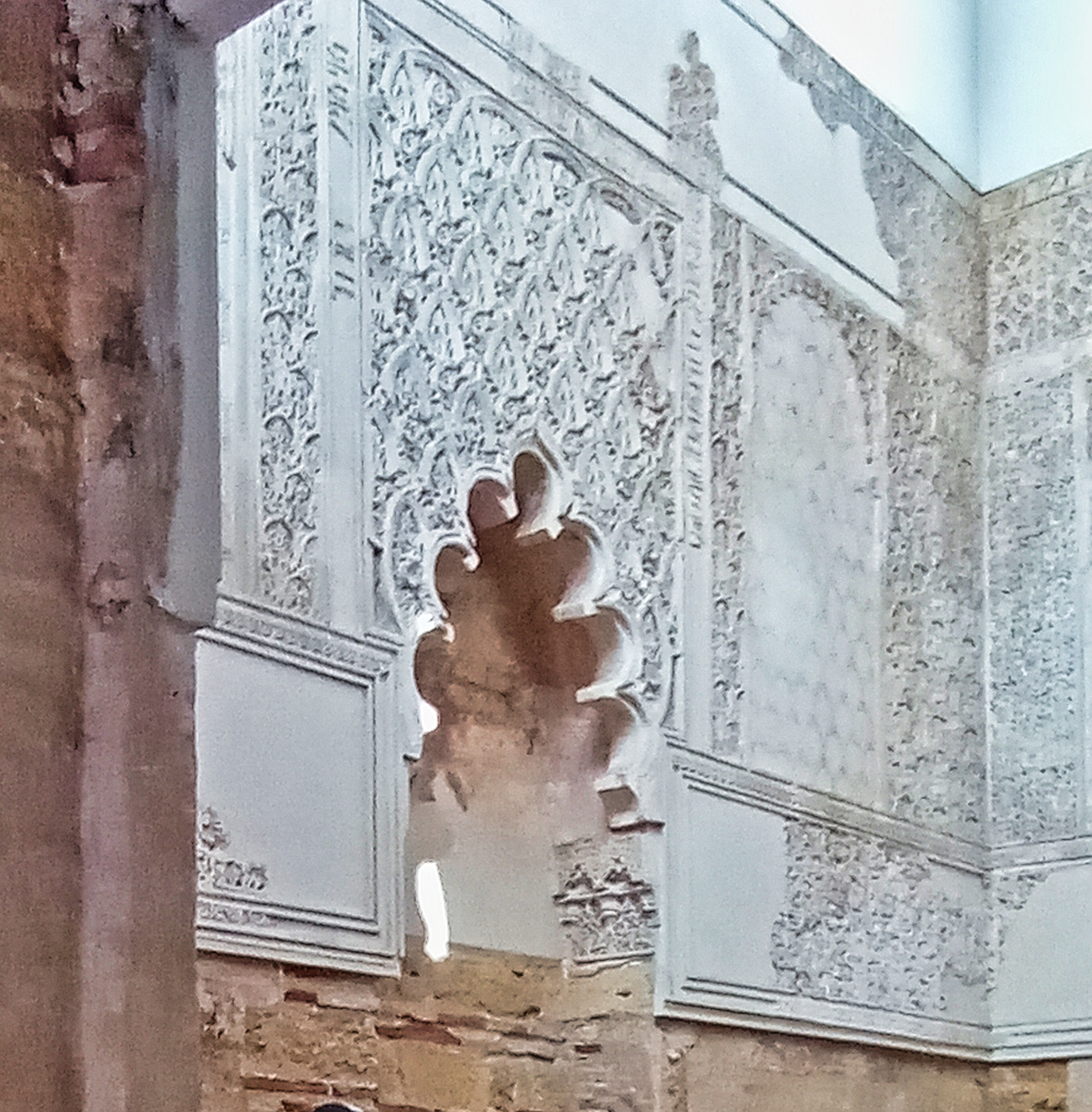
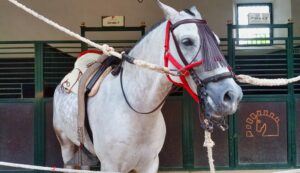
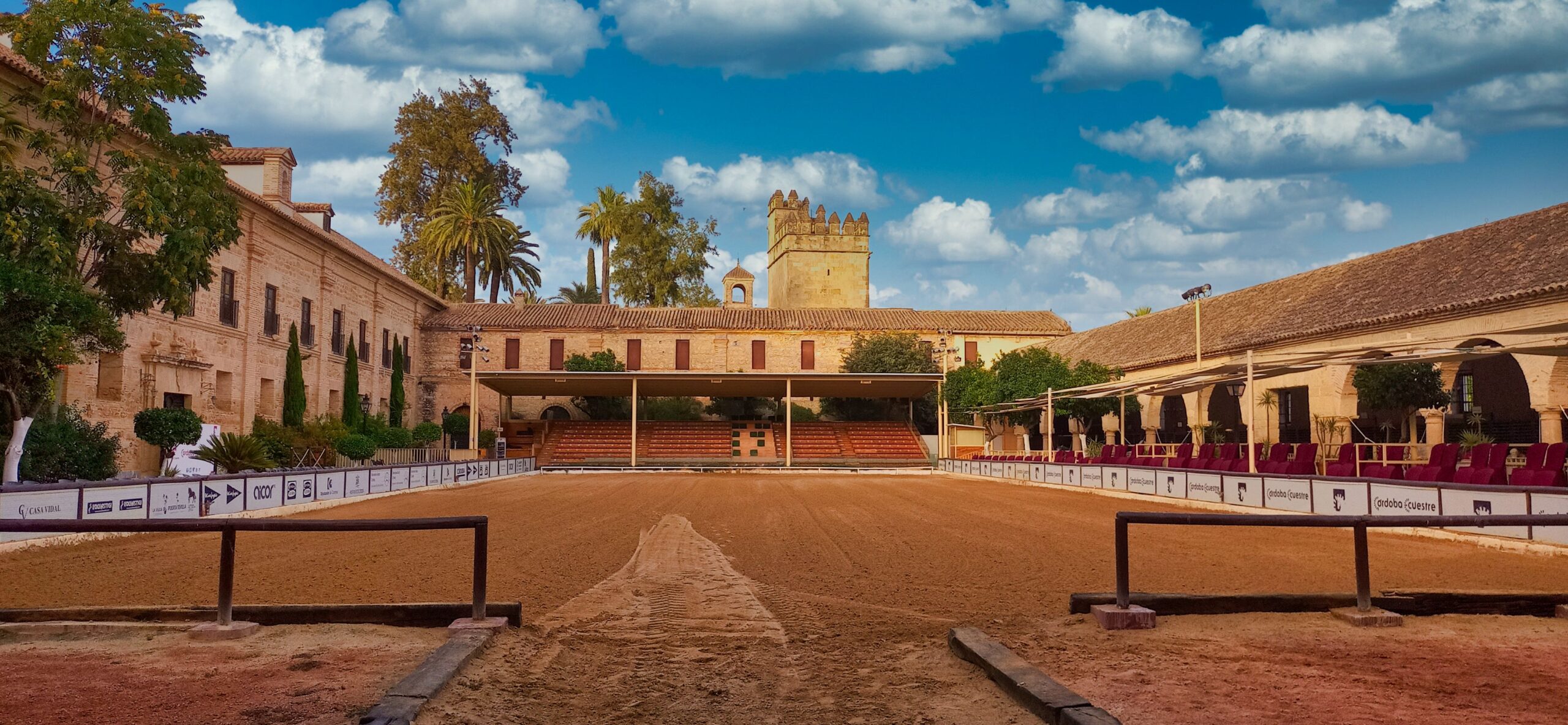
The Andalusian Horses of Cordoba
We absolutely loved our visit to the Royal Stables in Cordoba. They were founded in 1570 by a royal decree of King Felipe II, making it the home of the Andalusian Horse, a pure Spanish thoroughbred. The Andalusian horse rapidly became a very popular riding horse and is an equestrian symbol of Spain.
The daily horse show in the stunning setting of old Royal Stables is a wonderful experience. With various equestrian disciplines on show as well as some Flamenco dancing thrown in, it is a true taste of Spain. The beauty of the horses, stables and the well preserved traditions makes this a must of any visit to Cordoba.
The world famous Mosque (Mezquita de Cordoba)
The Mosque-Cathedral is considered one of the most important monuments of the Western Islamic world. It certainly is one of the most breath-taking and amazing buildings I have ever visited. It was originally the site of a Roman temple to Janus that the Visigoths converted to a Christian baslica in 572 AD and dedicated to St. Vincent.
After the Moors conquered Cordoba in 766 AD the basilica became the property of Abd-al Rahman I, who destroyed it to construct the first “Mosque Alhama” or main Mosque of the city. The mosque is a veritable “forest” of columns supporting red and white arches of jasper, onyx, marble and granite that give a strong chromatic effect. It is truly a magical experience to wander through the building and absorb the beauty of it’s richly decorated interior. (For more information visit https://www.mezquitadecordoba.org)
